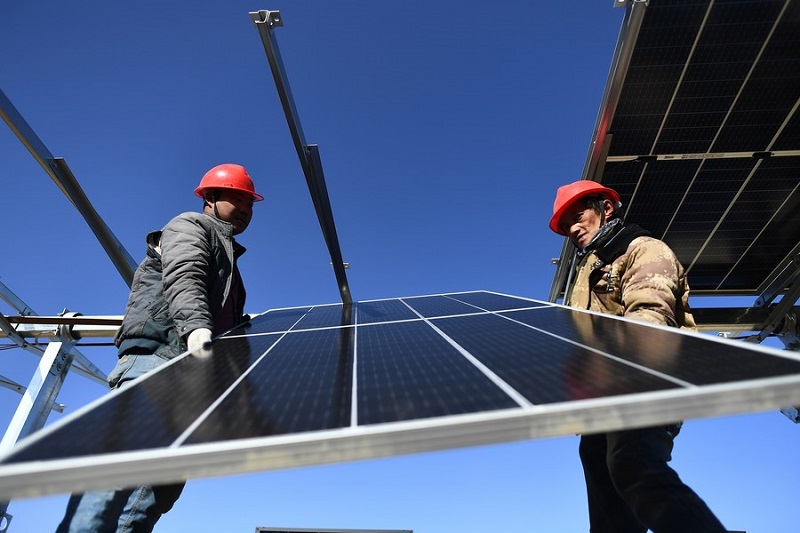China's resolute pursuit of reducing carbon emissions

Workers install a solar power unit at the construction site of a 300-MW photovoltaic electricity project of the China Datang Corporation Ltd. in Gonghe County, Tibetan Autonomous Prefecture of Hainan in northwest China's Qinghai Province, Dec. 15, 2020. [Xinhua/Zhang Hongxiang]
BEIJING -- China, the world's second-largest economy and the biggest investor in renewable energy sources, is formulating detailed and practical measures to realize carbon emission reduction.
The State Council, the country's cabinet, has recently issued a guideline aimed at accelerating the development of a green and low-carbon economic system.
The guideline calls for efforts to boost efficiency in the use of resources, strengthen the protection of the ecological environment, and effectively control greenhouse gas emissions. By 2025, China is expected to see a marked rise in the scale of green industries, a continued drop in major pollutants and a slashed carbon emission intensity, the guideline noted.
The document has outlined key measures to meet the targets, including the development of green and low-carbon production, consumption and circulation systems. China also plans to speed up green infrastructure upgrading, green and low-carbon technology development, and improvements in laws, regulations and policies.
As an important contributor to adopting the Paris Agreement and an active participator in its implementation, China is resolutely committed to tackling climate change. The country has vowed to peak carbon dioxide emissions by 2030 and achieve carbon neutrality by 2060.
The ambitious goals for carbon emission reduction will however not come easy. As the largest developing country, which is still in the stage of industrialization and urbanization, China has the right of development and also shoulders the responsibility of improving people's livelihood.
Carbon neutrality entails a complete economic and societal shift to green and low carbon usage, thus drastically decreasing the use of coal, a major source of energy in China. The country needs to significantly reduce the percentage of coal consumption in a relatively short period of time and overcome challenges in the fields of technology, industry, infrastructure construction, employment and social security.
The extensive shift would certainly pose a challenge to the country's customary economic development model, but China is confident to achieve carbon neutrality.
In order to fulfill the carbon reduction commitments to the world, China needs to make extremely arduous efforts. Low carbon industries like renewable energy, smart power grids and new energy vehicles are being widely developed across the country in pursuit of a greener future.
A national emissions trading system (ETS) is expected to be officially launched this year through which 2,225 power firms can start trading their emission quotas in the initial phase. Meanwhile, China aims to gradually expand the market to cover more energy-intensive industries and enrich trading varieties and trading methods.
Achieving the green development goal by a country with 1.4 billion people will be an inspirational precedent for the rest of the world.
The views don't necessarily reflect those of Qiushi Journal.
























